– Leading the market with Japanese brand old-age products and facility equipment, unique design and easy to use –
– Self-diagnosis devices and unmanned rehabilitation facilities are popular in Hong Kong due to the deepening problem of the elderly living alone –
– Need to develop interactive and interactive games to improve cognitive function of the elderly –
Exhibition Overview
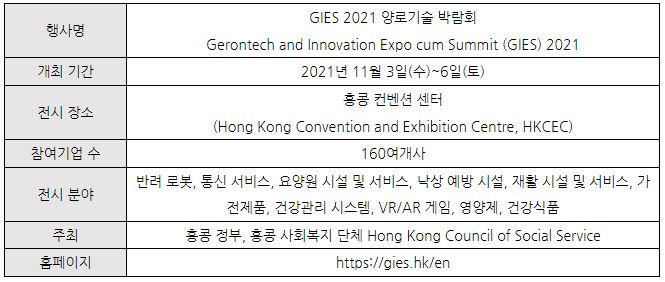
From November 3 to 6, the Hong Kong Elderly Technology Exhibition GIES 2021 was held at the Hong Kong Convention Center. This exhibition consists of four themed pavilions: Fall Prevention and Detection, Smart City Quality Service, Care Food Market, and Interactive Sports, and a total of 4 company participated. The exhibition was open to the general public and visited by a total of 160 people, and among them, the proportion of elderly participants was high.
As the elderly are experiencing difficulties in performing daily life due to deterioration in physical health, nursing facilities and services to support them are emerging in the market. The products displayed the most at this exhibition include chairs that can be adjusted in height and angle for the elderly to take a shower, robots that help with meals, and alarm machines that tell when to take medicine.
exhibition site
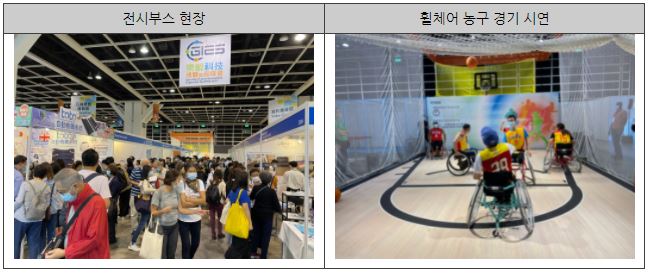
Dissemination of self-diagnosis medical devices according to the problem of the elderly living alone
As of 2016, the number of senior citizens living alone in Hong Kong was about 15, which is a significant increase of 2,500% compared to 10, 2006 years ago. It was expected that the problem of the elderly would continue to intensify.
Dangerous situations that older people may encounter while living alone at home include illness, stroke, and falls. A Japanese startup, Xenoma, has developed an RFID* (Radio-frequency identification)-based sensor that can measure a person's location, motion and body temperature, and has released smart pajamas by attaching the sensor to pajamas. Through IoT (Internet of Things) technology, all data related to the health of the elderly is transmitted to the guardian's smartphone, and an alarm sounds when an accident occurs, allowing the guardian to take immediate action. Unlike a general wearable bio-sensor, it does not need to be attached to the body of the elderly, so the advantage is that it does not cause inconvenience to the elderly.
*Note: A technology that recognizes information from a long distance using radio waves, that is, electromagnetic induction.
Smart Pajama and Elderly Monitoring System
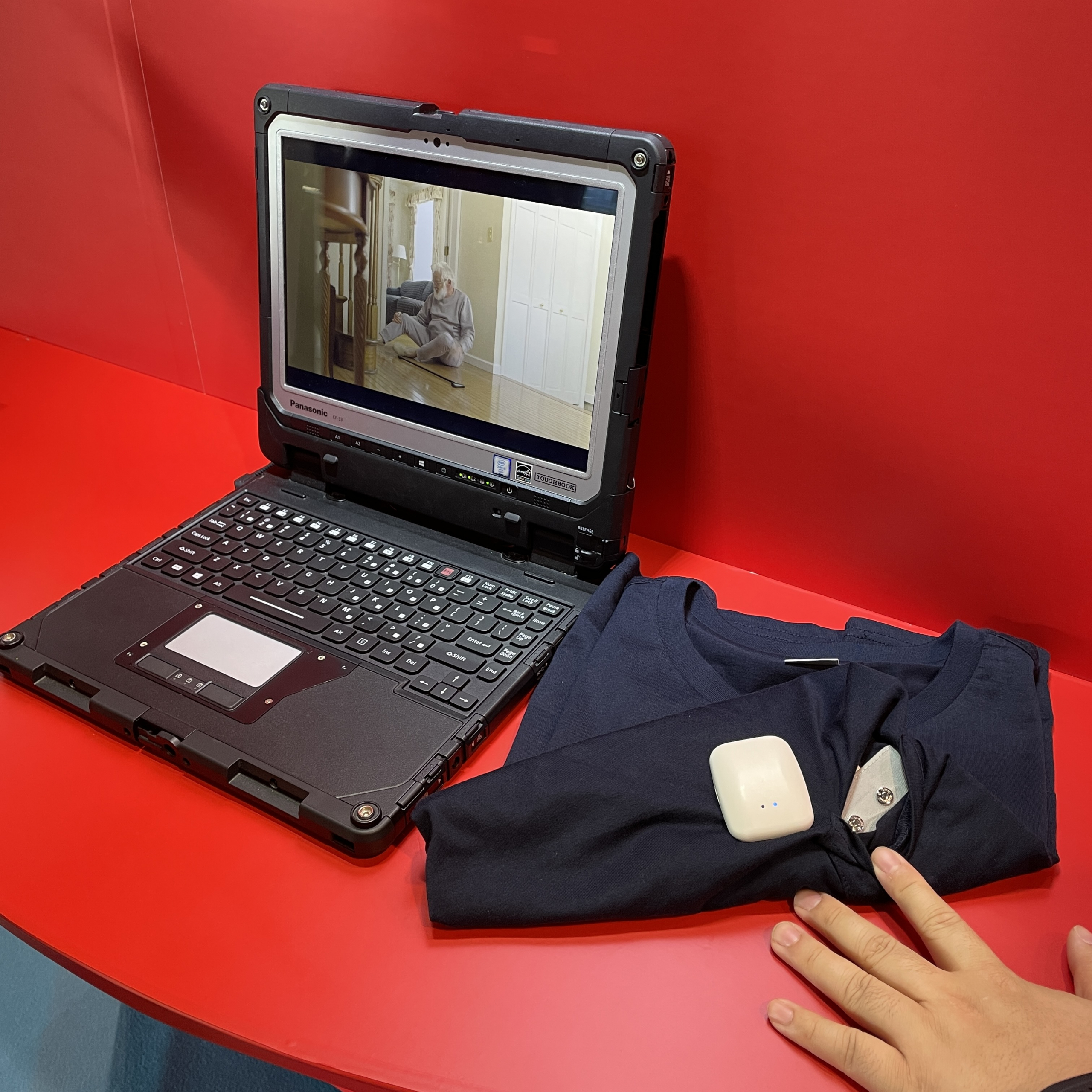
Vital, a non-invasive health monitoring system developed by Hong Kong design firm Studio Doozy, caught the attention of on-site buyers with its unusual shape. Heart activity recording, heart rate, and body temperature measurement functions are installed in one device, so it is easy to use because you can diagnose your health by raising your hand. According to an official from Studio Doozy, Vital has not yet been officially launched on the market, but as the non-invasive treatment technology becomes a trend in the medical industry, the demand from the elderly for the non-invasive health monitoring system is expected to continue to expand in the future. He mentioned that he plans to develop a non-invasive blood glucose measurement device for diabetic patients.
Non-invasive health monitoring system
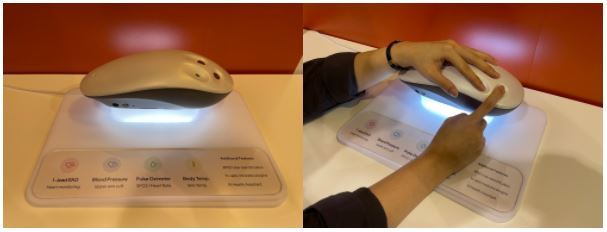
Various toy products for cognitive ability and mental health of the elderly
The elderly living alone also have difficulties in economic and physical health, but they are very vulnerable to mental health because they feel more lonely or depressed because they do not have a family to live with. According to a survey published by the Center for Suicide Research and Prevention at the University of Hong Kong in 2020, the number of deaths by suicide among the population aged 60 and over increased by 15.6% compared to the previous year, and the suicide rate among the elderly as a percentage of the population by age was 21.7% was found to be the highest.
Recognizing the seriousness of the negative effects of mental health such as stress and depression in the elderly, companies are launching toys that improve the positive emotions and cognitive abilities of the elderly. Hong Kong medical device company iDSMED exhibited a companion robot seal imported from Japan. Audio sensors and cameras are installed on the robot's head, so it recognizes the surrounding light, sound, temperature, and user's touch and makes a sound. The biggest difference from regular dolls is that artificial intelligence (AI) can learn and identify one's name as the owner calls it, improving interaction with users. According to an official from iDSMED, it was mentioned that the reason for the design in the shape of a seal was to select an unusual animal to prevent the elderly from recalling negative memories such as memories with companion animals such as dogs and cats and the resulting depression.
companion robot seal
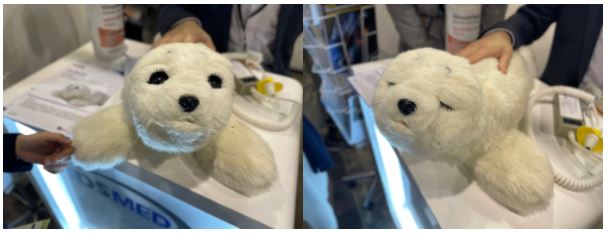
Cognitive decline in the elderly can lead to serious diseases such as dementia. To prevent this, it is necessary to stimulate the senses of the elderly through fun and simple play. IF Interactive, a local interactive* game developer, has developed sandplay using augmented reality (AR) technology. In the process of building and digging sand, a projector installed on the sand board projects various pictures such as the sea, mountains, volcanoes, and trees according to the shape and height of the sand. This can improve imagination and storytelling ability by stimulating the multi-sensory of the elderly like a toy for children.
*Note: interactive, reacting to user actions
Multisensory stimulation AR sand play
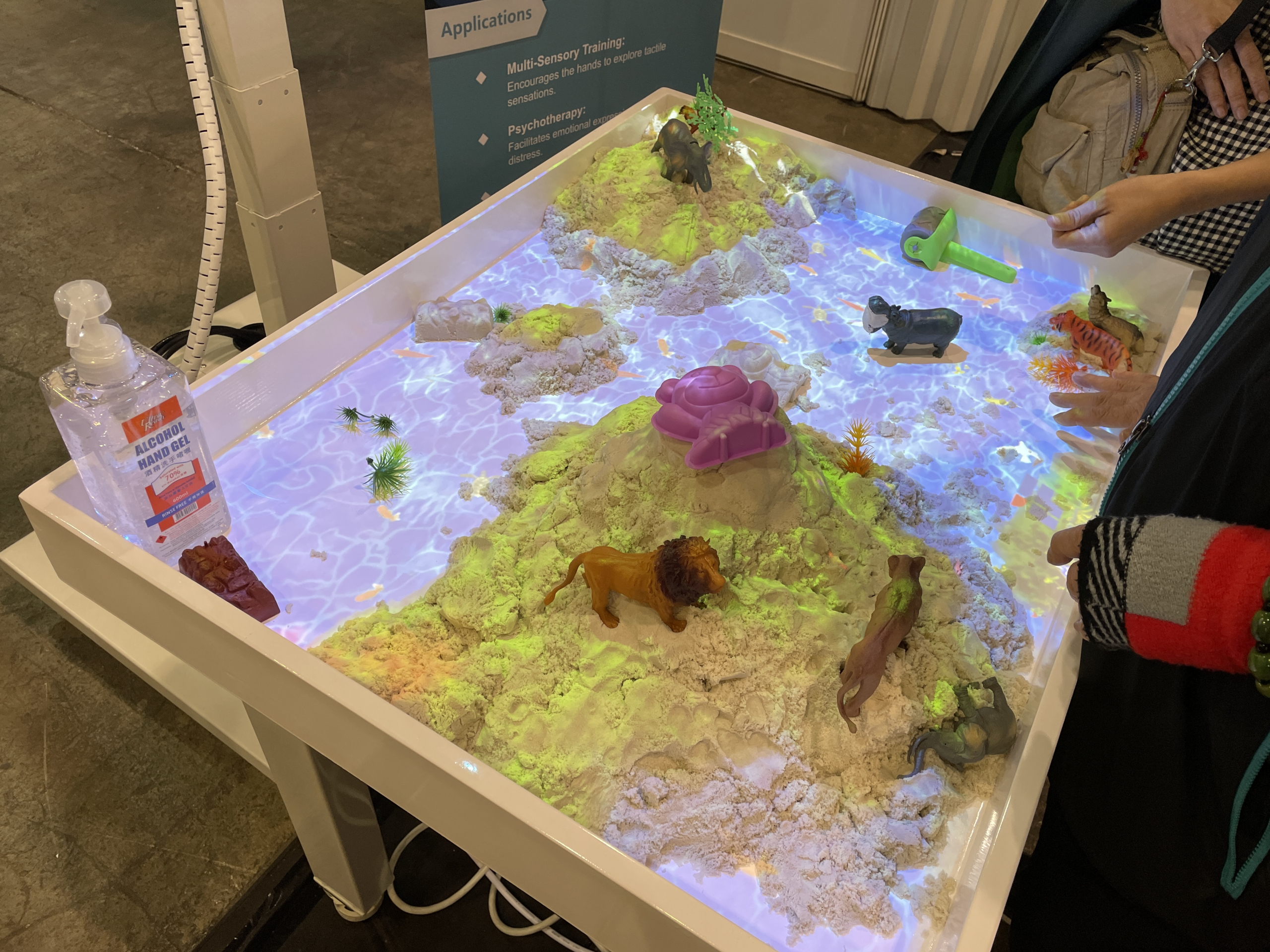
Unmanned rehabilitation facilities provide users with a higher degree of freedom
Due to the COVID-19 outbreak, the utilization of rehabilitation robots has increased due to the shortage of manpower in hospitals and nursing homes. Rehabilitation robots are used for treatment by attaching auxiliary devices to industrial robots, and are being introduced in local public hospitals and nursing homes. Germany's Otto Bock, which has more than 100 years of experience in rehabilitation facilities and wheelchair production, has released a folding wheelchair equipped with a wheelchair transport kit (removable battery, motor, etc.) developed by Todo Works, a Korean science and technology company. It is lighter than a general electric wheelchair and all parts are detachable, so the user can operate it as desired. An official from Otto Bock mentioned the importance of acquiring European product safety certification for entry into the Hong Kong market as the competition in the rehabilitation facility market using advanced technology becomes more intense.
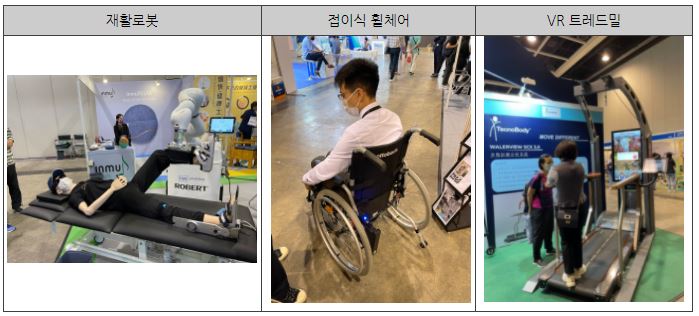
implication
Hong Kong, where income growth and scientific and technological developments continue, is rapidly entering an aging society as the elderly population continues to increase. At GIES 2021, Japanese elderly products were mainly exhibited and entered the Hong Kong market through Hong Kong medical device sales companies and elderly welfare service providers. Japan is also one of the countries with the most serious aging problem, and is leading the Hong Kong elderly care product market with its unique design and sophisticated technology. As competition with advanced technology countries such as Japan and Germany intensifies, Korean companies can target the Hong Kong elderly care product market by designing products that are easy to use from the perspective of the elderly and expanding applications to goods robots in line with the unmanned trend. have.
Source: Otto Bock, Todo Works, Center for Suicide Research and Prevention, Studio Doozy, Gerontech and Innovation Expo cum Summit (GIES) 2021, The Bauhinia Foundation Research Center, Xenoma, iDSMED, If Interactive, KOTRA Hong Kong Trade Center



